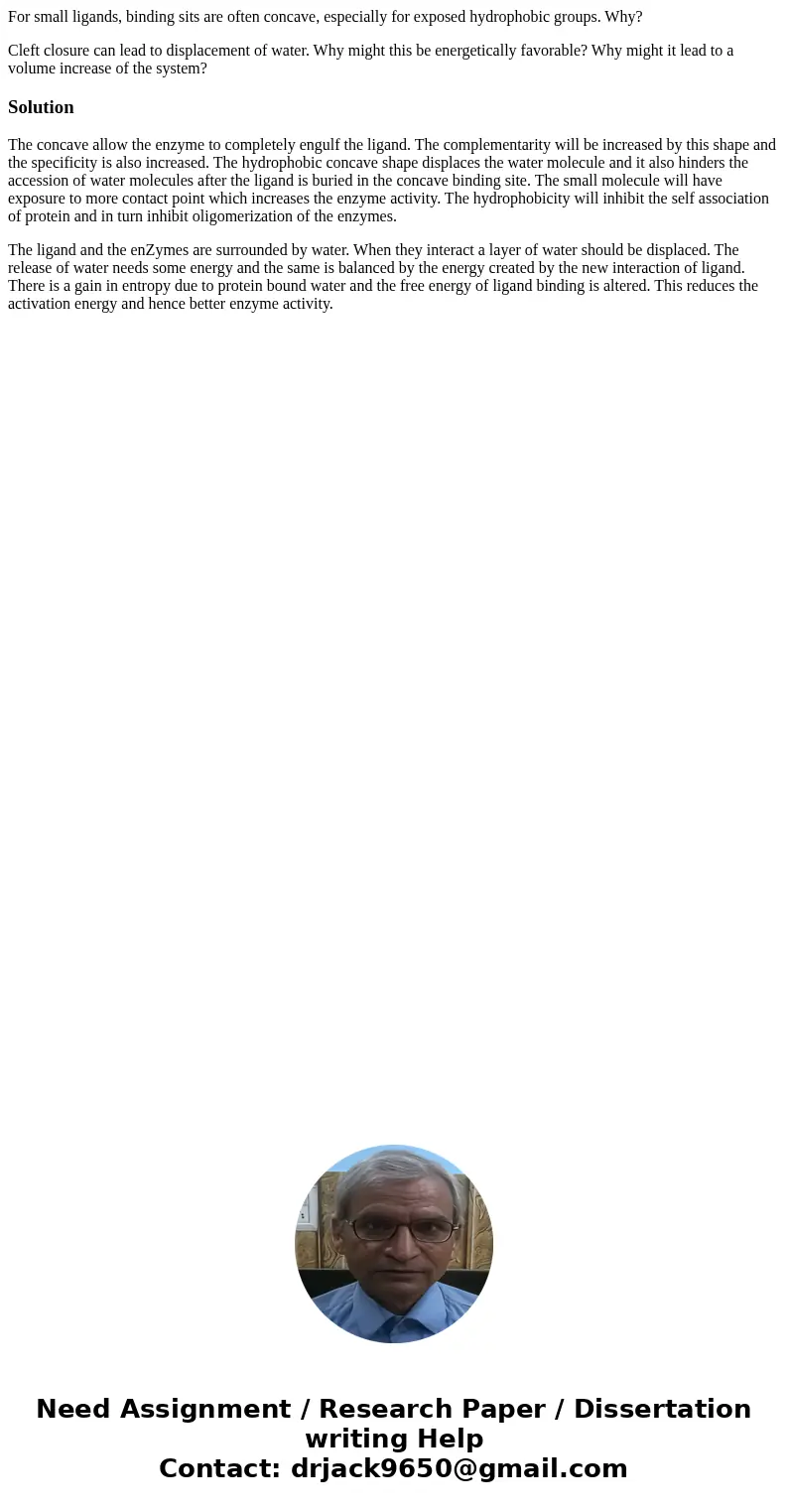For small ligands binding sits are often concave especially
For small ligands, binding sits are often concave, especially for exposed hydrophobic groups. Why?
Cleft closure can lead to displacement of water. Why might this be energetically favorable? Why might it lead to a volume increase of the system?
Solution
The concave allow the enzyme to completely engulf the ligand. The complementarity will be increased by this shape and the specificity is also increased. The hydrophobic concave shape displaces the water molecule and it also hinders the accession of water molecules after the ligand is buried in the concave binding site. The small molecule will have exposure to more contact point which increases the enzyme activity. The hydrophobicity will inhibit the self association of protein and in turn inhibit oligomerization of the enzymes.
The ligand and the enZymes are surrounded by water. When they interact a layer of water should be displaced. The release of water needs some energy and the same is balanced by the energy created by the new interaction of ligand. There is a gain in entropy due to protein bound water and the free energy of ligand binding is altered. This reduces the activation energy and hence better enzyme activity.

 Homework Sourse
Homework Sourse